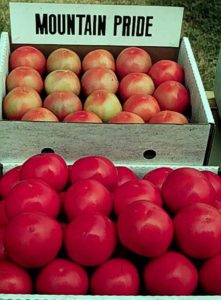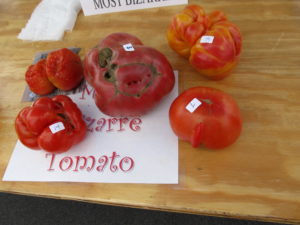Improved disease resistance, fruit color, firmness, and flavor continues to be the main goals of tomato breeders around the U.S. Leaf and root diseases vary from one region to another across the country. Here in the eastern U.S., late blight resistance is of key interest.
Over the past 33 years, Dr. Randy Gardner, tomato breeder extraordinaire in western North Carolina, has developed over 25 varieties. Some of his most popular varieties include ‘Mountain Pride’, ‘Mountain Spring’, ‘Mountain Fresh’, and ‘Mountain Majesty’. The latter variety has really nice flavor and exhibits exceptional red fruit color.
Gardner’s newest grape tomato variety, ‘Mountain Honey’, exhibits great flavor and disease resistance. Vines are indeterminate, e,g., bear fruits all summer long with higher sugar content compared to many grape tomato varieties on the market.
Tomato breeders are focused on improving old-timey varieties. Gardeners call them “heirlooms”. Gardner is no exception, focused on improving heirlooms for fruit appearance, less fasciation (a lobed shape), more disease resistance, increased firmness (less cracking), and a smaller inner core, while retaining their traditional flavor and eating quality.
Looking ahead to 2018, he will release ‘Mountain Rouge’ which performed better in trials compared to common heirloom varieties ‘Cherokee Purple’, ‘Pink Brandywine’, and ‘Mr. Stripey’. Many heirloom varieties were susceptible to late blight late in the harvest season. Mountain Rouge retains the super flavor of ‘Pink Brandywine’.
A rising trend at produce markets is regional branding of tomato varieties. In the future a popular California variety may not sell as well in a New York market. East coast customers prefer the flavor of the heirloom tomatoes, and tomato breeders are working to improve their yields while keeping their flavor.
.
prefer striped type heirloom varieties. Those sold for a fresh market tend to be less firm, softer flesh, and thin skinned; they don’t need to be shipped long distances. Multi- purpose varieties may serve several cuisines……
.
.



 Posted in
Posted in 
